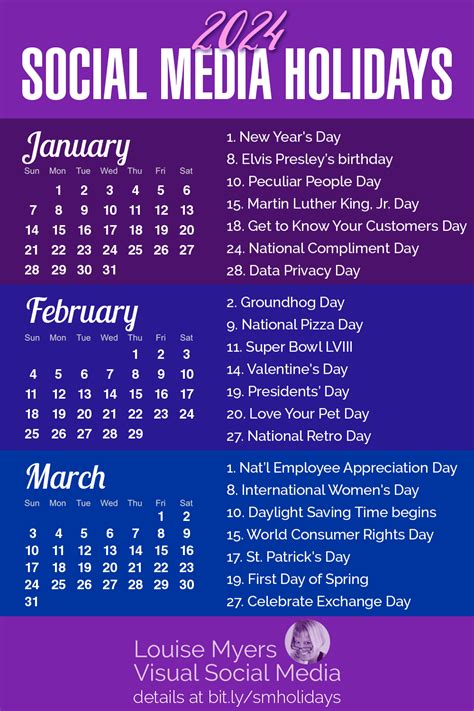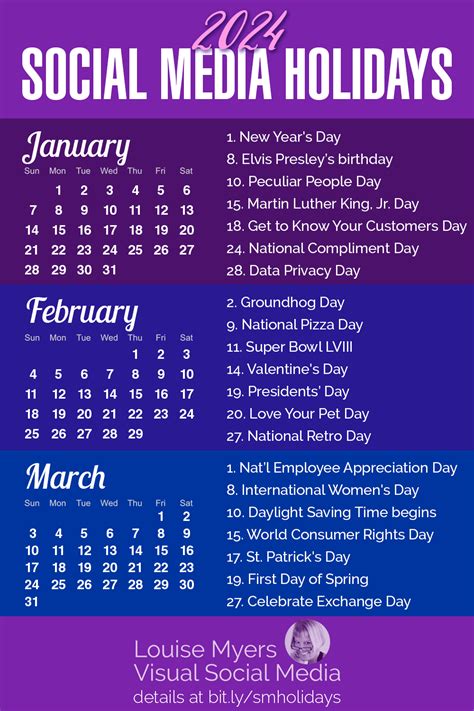Leverage social media holidays for engaging content, create a year-long calendar, measure impact with our 2024 social media holiday calendar blog.In today’s fast-paced digital landscape, it’s more important than ever for businesses to have a strong content strategy in place. With so much competition for attention on social media, creating relevant and timely content is crucial for engaging your audience and standing out from the crowd. One powerful tool for maximizing your content strategy is leveraging social media holidays. These holidays provide the perfect opportunity to connect with your audience through shared experiences and interests.
In this blog post, we’ll explore the importance of a solid content strategy and how social media holidays can be used to boost engagement. We’ll discuss the benefits of creating relevant and timely content, and how to implement a year-long content calendar that includes social media holidays. Finally, we’ll delve into measuring the impact of holiday content to ensure that your efforts are paying off. With the 2024 social media holiday calendar as our guide, we’ll show you how to take your content strategy to the next level and make the most of these valuable opportunities for connection and engagement.
Understanding the Importance of Content Strategy
Content strategy is a crucial aspect of any marketing plan, as it dictates how a brand’s message will be conveyed to its audience. Without a solid content strategy, businesses may find themselves sending mixed, conflicting, or irrelevant messages to their target market.
One of the primary benefits of a content strategy is that it helps businesses maintain consistency across all communication channels. Whether it’s the company website, social media platforms, or email marketing, a well-planned content strategy ensures that the brand’s voice remains unified and coherent.
Furthermore, a strong content strategy helps businesses establish authority and credibility in their respective industries. By providing valuable, relevant, and timely content to their audience, brands can position themselves as thought leaders and go-to sources of information in their field.
Ultimately, understanding the importance of content strategy is vital in order to effectively communicate with and engage the target audience, build brand reputation, and drive business growth.
Leveraging Social Media Holidays for Engagement
Understanding the Importance of Content Strategy
Social media holidays are special occasions that are celebrated across various social media platforms, and they present a unique opportunity for brands to engage with their audience. By leveraging these holidays, companies can create content that resonates with their target market, resulting in increased brand visibility and customer engagement.
One effective way to capitalize on social media holidays is by creating relevant and timely content that aligns with the theme of the holiday. Whether it’s National Pet Day or International Women’s Day, crafting posts that are in line with the holiday’s theme can help generate interest and interaction from followers. This could include sharing user-generated content, launching themed promotions or contests, or simply joining the conversation with creative and engaging posts.
Furthermore, having a year-long content calendar that includes key social media holidays can ensure that your brand is prepared to capitalize on these occasions. By planning ahead and incorporating these holidays into your content strategy, you can maintain a consistent posting schedule and keep your audience engaged throughout the year.
| Social Media Holiday | Date |
|---|---|
| World Environment Day | June 5th |
| National Coffee Day | September 29th |
| Small Business Saturday | November 27th |
Ultimately, by measuring the impact of your holiday content through metrics such as engagement, reach, and conversion rates, you can gain valuable insights into what resonates with your audience and refine your strategy for future social media holidays. This iterative approach can help you maximize the effectiveness of your content strategy and drive meaningful engagement with your brand.
Creating Relevant and Timely Content
In today’s fast-paced digital world, it is crucial for brands to create relevant and timely content that resonates with their target audience. This means understanding the current trends and topics that are capturing the attention of your audience and finding ways to incorporate them into your content strategy.
One way to ensure that your content remains relevant and timely is by leveraging social media holidays and events. By incorporating these trending topics into your content calendar, you can capitalize on the increased engagement that often comes with these events and connect with your audience on a more personal level.
Another important aspect of creating relevant and timely content is to conduct regular keyword research to stay on top of the latest search trends. By understanding what your audience is searching for, you can tailor your content to meet their needs and remain at the forefront of their minds.
Additionally, measuring the impact of your holiday content and campaigns is essential in determining the success of your efforts. Use analytics tools to track engagement, reach, and conversions to understand what is resonating with your audience and adjust your content strategy accordingly.
Implementing a Year-Long Content Calendar
One of the most essential components of a successful content strategy is implementing a year-long content calendar. This tool allows you to plan and organize your content creation, publication, and promotion efforts over the course of the year. By establishing a calendar that outlines key dates, events, and themes, you can ensure that your content is relevant, timely, and aligned with your overall marketing goals.
Creating a year-long content calendar involves identifying and prioritizing the most important dates and milestones for your organization. This could include product launches, industry conferences, and seasonal trends, as well as significant holidays and observances that are relevant to your target audience. By carefully mapping out these events in a structured calendar format, you can proactively schedule content production and distribution, leaving less room for last-minute scrambling and ensuring a more cohesive and consistent content strategy throughout the year.
Furthermore, a year-long content calendar provides a framework for collaboration and alignment across different teams within your organization. By sharing a centralized calendar that outlines the content schedule for the entire year, you can facilitate coordination between marketing, sales, product development, and other relevant departments. This level of visibility and transparency can help to ensure that all stakeholders are working towards the same objectives, leading to more effective content creation and distribution.
In essence, implementing a year-long content calendar is a proactive and strategic approach to managing your content strategy. By taking the time to plan ahead and organize your content efforts around key dates and themes, you can maximize the impact of your content and ensure that it remains relevant and engaging to your target audience throughout the year.
Measuring the Impact of Holiday Content
As a content marketer, it’s crucial to measure the impact of your holiday content to understand its effectiveness and make informed decisions for future campaigns. With the right metrics in place, you can assess the success of your holiday content and determine if it resonated with your audience.
One way to measure the impact of holiday content is through engagement metrics such as likes, shares, and comments. These actions indicate that your audience found the content compelling enough to interact with, and can provide valuable insights into what type of content resonates with them.
Another important metric to consider when measuring the impact of holiday content is click-through rate (CTR). By analyzing how many people clicked on a link in your holiday content, you can gauge its effectiveness in driving traffic to your website or landing page.
It’s also essential to analyze the conversion rate of your holiday content. This metric measures how many people took a desired action after engaging with your content, such as signing up for a newsletter or making a purchase. By tracking conversions, you can determine the impact of your holiday content on your overall marketing goals.
Frequently Asked Questions
What is the 2024 Social Media Holiday Calendar?
The 2024 Social Media Holiday Calendar is a comprehensive list of holidays and observance days that can be used as a content strategy tool for social media marketing.
How can the calendar help in maximizing content strategy?
The calendar can help in planning and creating relevant and engaging content around specific holidays and observance days, thus maximizing the impact of the content strategy.
What are some examples of holidays included in the calendar?
Examples of holidays included in the calendar are New Year’s Day, Valentine’s Day, Mother’s Day, Independence Day, Halloween, Thanksgiving, Christmas, and many more.
Where can I find the 2024 Social Media Holiday Calendar?
The 2024 Social Media Holiday Calendar can be found online on various websites and social media marketing resources, and can also be downloaded for easy reference.
Why is it important to align content strategy with holidays?
Aligning content strategy with holidays allows brands to connect with their audience on a more personal and emotional level, leading to higher engagement and brand loyalty.
How can businesses use the calendar for their content strategy?
Businesses can use the calendar to plan their social media posts, blog content, email marketing, and promotions around relevant holidays, effectively leveraging the calendar for their content strategy.
What are the benefits of incorporating the calendar into content strategy?
Benefits include increased audience engagement, improved brand visibility, higher conversion rates, and the opportunity to showcase a brand’s personality and values through holiday-themed content.


